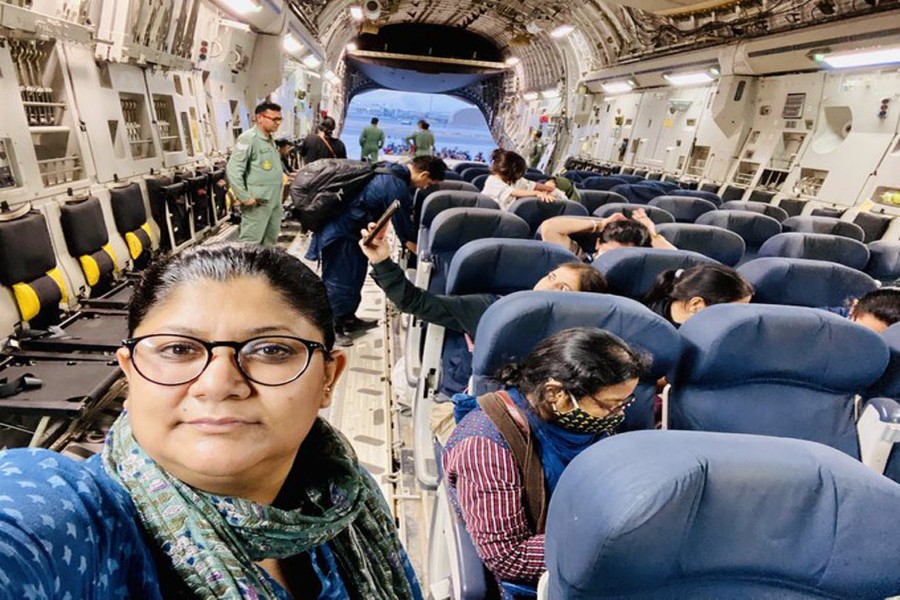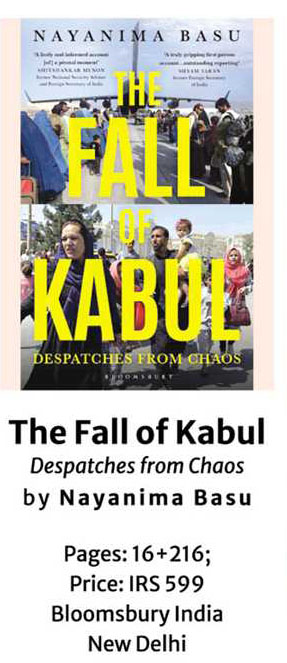
Book REVIEW
A firsthand account of retaking Kabul by the Talibans
Asjadul Kibria reviewing the book | Friday, 22 November 2024

Just a decade ago, Barack Obama, then-president of the United States (US), ordered gradual withdrawal of American forces from the soil of Afghanistan. Thus a turning point in the history of the country started. The presence of the US and allied troops under NATO since 2001, when the Taliban was ousted from power in Afghanistan, was considered a strategy to stabilise the country during the post-Taliban period. But more than a decade later, it was proved that the strategy did not work, and the country continued to plunge into uncertainty. So, Obama’s decision to withdraw the US forces was the right step to reduce conflicts, bloodshed and instability as well as the loss of the US taxpayers’ money. After winning the election in 2016, Donald Trump tried to reverse the withdrawal order. He, however, backtracked in 2019. In 2021, Joe Biden ordered the final withdrawal.

Taliban, the fundamentalist force strongly believed in conservative Islamic values and orthodox Sharia laws, meanwhile reconsolidated their position across the country. As time passed, Taliban fighters also widened their attack on the government army. As Obama’s order coincided, Ashraf Ghani became the president and was assured that NATO troops would continue to train the Afghan forces. The situation, however, went from bad to worse gradually as the US and Taliban signed an agreement in 2020. Under the deal, the US committed to withdraw all troops by 2021, and the Taliban promised to sever ties with all terrorist groups. Taliban also agreed to join peace talks. But things did not take place as planned by the US.
As talks to negotiate a peace deal between the political leaders of the Taliban and the Ghani government were going on in Doha in 2021, Taliban forces started to capture provinces and cities one after another at a faster rate. The talk ultimately failed, as predicted, and the Taliban took control of Kabul, the capital city of the country, on August 15, 2021.
Indian journalist Nayanima Basu, witnessed those eventful days in Kabul, travelling outside, talking to Afghan people, and sending despatches for her newspaper in Delhi. Her experience to cover the hostile war zone is compiled in her debut book The Fall of Kabul: Despatches from Chaos. Published a couple of months ago, the book has already attracted readers’ attention for obvious reasons. It is the only firsthand account of the return of the Taliban by anyone in India.
Being a seasoned journalist, Basu used to cover conflict zones in her home and abroad, in addition to her versatile coverage of geopolitics and international trade. She had been following the development in Afghanistan and so decided to rush there to find and tell the stories on the ground in July 2021. At that time, she was working for The Print, and her editor-in-chief, Shekhar Gupta, approved the risky travel that continued for nine days.
The writer presents the eventful days in the book so illustratively as if she had maintained an extensive journal. Her passion for describing developments in Kabul and surrounding areas clearly and truly drives her to preserve all the notes and records as carefully as possible. The eventful nine-day, divided into nine separate chapters in the book, vividly depicts uncertain, turbulent, and anxious developments in almost every hour during the days. Being the only woman journalist, Basu had to take additional precautions to ensure that her work did not get disrupted.
As readers move ahead, page after page, they become engrossed in the vivid accounts of how Basu almost got arrested after landing in Kabul and how she managed to reach Hotel Serena, where all the journalists from different international media gathered. The next day, without wasting a minute, Basu moved around the streets of Kabul and talked to people to understand their pulse.
In the following days, Basu dared to fly to Mazar-e Sharif, the third-largest city in Afghanistan, where she met two Imams of Blue Masque, General Noor, a few young soldiers and some others. She sent stories to New Delhi during the travel, defying all odds. The excellent internet connectivity, thanks to America, helped her a lot and all others, no doubt.
Staying two days in Mazar, Basu returned to Kabul with growing anxiety that the Taliban would retake power. The next day, the anxiety intensified: “Kabul was abuzz with murmurs that President Ghani was stepping down from his post. The Afghan army was falling like a pack of cards, and Afghans in Kabul, inside university campuses, hotels, restaurants, salons, and markets, were saying the Taliban could enter the capital city at any moment, and there was nobody to defend it.” (P-54) All these happened within three days, as described by Basu later. Meantime, her frantic move to get a broader picture drove her to Kandahar to met Gulbuddin Hekmatayar, a former prime minister of Afghanistan, for an interview. The journey was adventurous and dangerous. One needs to read the book to know what happened and how she finally met Hekmatayar.
On August 15, 2021, the Taliban were finally back and retook Kabul. Basu encountered one after another obstacle to enter Kabul from Kandahar and finally to the hotel, which was surrounded and occupied by a section of Taliban forces. There is a vivid description of what happened outside the hotel: “Back in my room, I focused on my work and packing. ..Since my room overlooked the main road, I could see the constant movement of convoys of pickup trucks to and from the Serena, packed with Taliban fighters waving their big white flags. Those civilians who were out on the streets with their rickety rifles to kill the Taliban had simply vanished.... Row after row of Taliban convoys were zipping by my window. Some of the fighters were on foot, loudly sloganeering while waving their flags. All those cars, the families walking on the pavement, the fruit sellers... were all gone. The watchtower on the opposite road was now empty. A security guard used to be stationed there at all times since it was a government office. I told myself, ‘This is not the Kabul where I landed.” (P 109-110)
The book’s final chapter presents Basu’s return journey from Kabul, an unwilling escape for a journalist after spending a turbulent week but unable to cover the formal takeover of the Taliban. In her language: “As we waited for take-off, a journalist friend, not from India, who had stayed backed in Kabul and continued to report from there for a few more months, messaged me to say that the Taliban was meeting the media at the Serena’s reception area and this would be followed by a press conference, their first since coming to power. I was missing it. That feeling of missing something so key by just a few hours, the void that it created in me as a professional, continues to bother me to this day.” (P-136). As she backed home ‘with a bit of Afghanistan’ in her, readers will also feel a melancholy note of the land and the ordinary Afghans.
Throughout the book, readers will feel excitement and anxiety as Basu describes her movements and experiences in lucid language. It is no less than a thriller fiction or action movie. Her uncompromising devotion to journalism and courage also deserves praise. She has set an example in India as well as South Asia, no doubt. Being a student of history and covering geopolitical issues for a long time, Basu also adds an epilogue loaded with information and analyses, making the book a resourceful one.
asjadulk@gmail.com